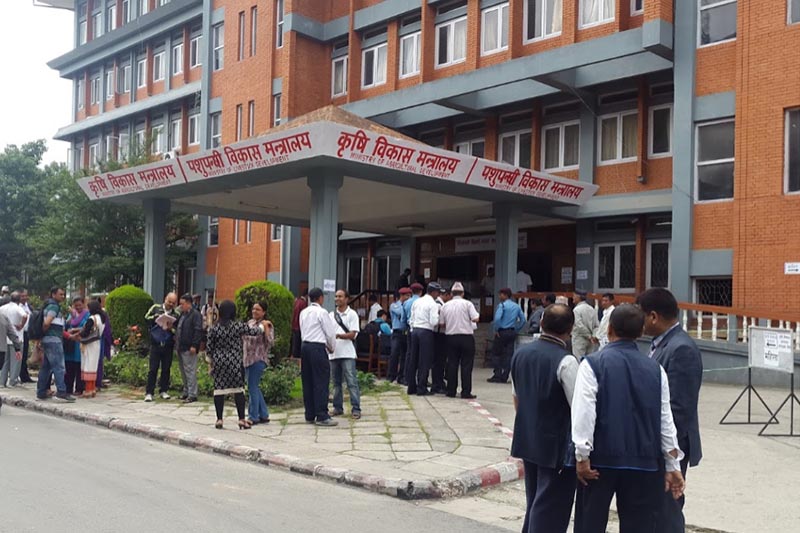Taskforce says less threat of locust infestation in Nepal
KATHMANDU, JUNE 2
A taskforce formed to study the possible impact of locust invasion in Nepal has said that the possibility of locusts migrating to Nepal is highly unlikely as the monsoon season has started in the country.
The Ministry of Agriculture and Livestock Development (MoALD) had formed a taskforce on May 26 to study the possibility of desert locusts that are wreaking havoc in various countries including India migrating to Nepal. The panel had also been asked to recommend ways to protect the crops and prevent widespread damage.
Taskforce coorindator Sahadev Humagain, who is also the chief of Plant Quarantine and Pesticide Management Centre, stated that their study has revealed the locusts are unlikely to migrate to Nepal.
“After studying the migration trend of locusts and climate impacts, we have concluded that they are moving from east to west, which means there is a low chance of the locusts migrating to Nepal,” he said, adding, “However, it has to be enlisted as dangerous insect that can damage agricultural produces.”
He further said the taskforce will submit its report by Wednesday with recommendations of precaution measures to be adopted to prevent the impact of locusts in Nepal.
Meanwhile, Rajendra Prasad Bhari, MoALD secretary, also stated that agriculture experts from Food and Agriculture Organisation (FAO) have also stated that the locusts may not travel through Nepal as the monsoon has already started in the country.
“We held a meeting with the FAO a few days ago, in which they suggested some prevention measures that we are following at the moment,” he said, “They also stated that the rainfall affects the travel route of locusts hence, there is low chance of locusts coming to Nepal.”
He, however, said that the taskforce formed by MoALD has revealed that a few small groups of locusts could enter Nepal from the far western region. The ministry will take the needful action to prevent its impact, he added.
Prior to this, the insects were seen in Nepal in 1962.
Back then, the swarm had attacked crops in Kathmandu, Nuwakot, Dhading and a few other districts damaging a large number of crops.
This year, starting from northern Africa the swarm of insects has travelled via Sudan, Iran and Pakistan and then to Rajasthan in India and currently it is affecting crops in Delhi. Thus, the stakeholders have been warning the government to be alert and make preparations to curb infestation.
A version of this article appears in e-paper on June 3, 2020, of The Himalayan Times.






